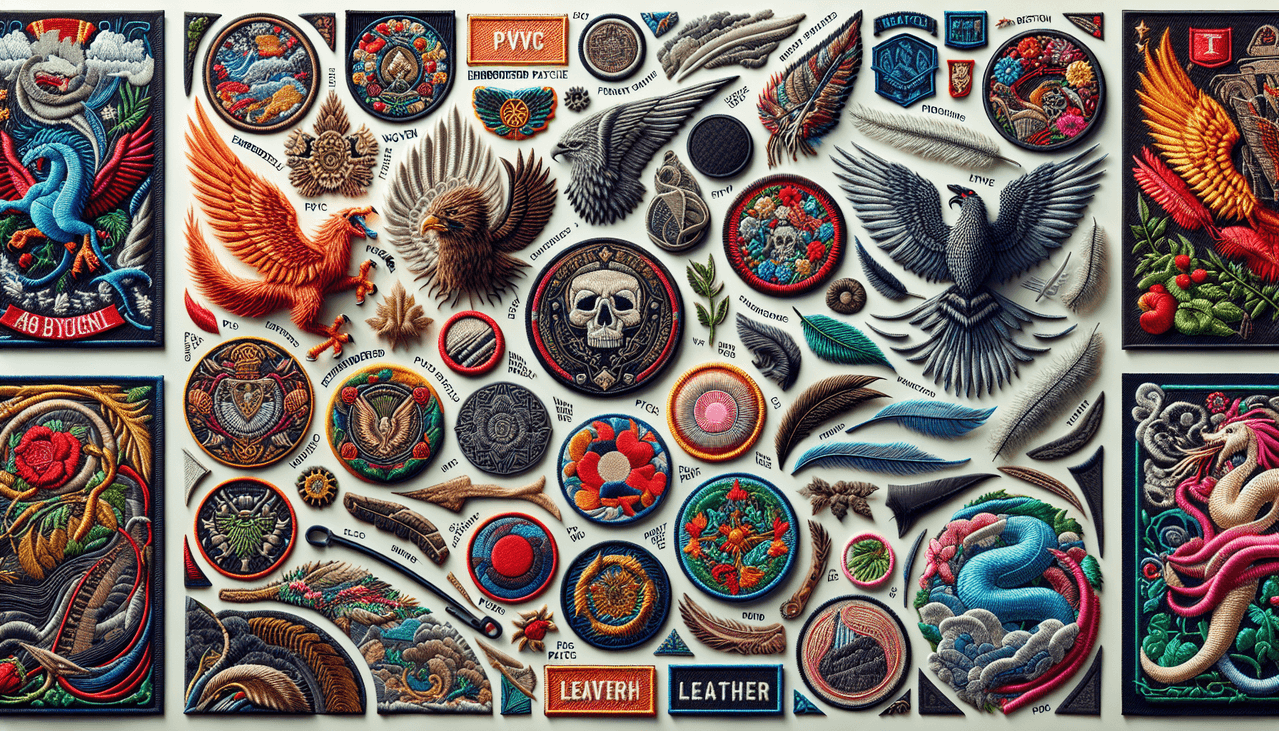The intricate art of patchwork is not only a testament to the skill and creativity of textile artists but also a celebration of culture, history, and sustainability. Each patch tells a story, adding depth and personality to fabrics and clothing alike. From the vintage allure of traditional quilts to the contemporary appeal of customized patches, this craft spans a diverse range of styles and techniques. In this deep dive, we’ll explore the different patch styles, their unique characteristics, and why they continue to charm fabric lovers around the globe. If you’re a hobbyist looking to start your patchwork journey, or an experienced quilter seeking to refine your skills, this guide is tailored for you—so stitch your way in and discover the patch that best suits your artistic vision.
Understanding Patchwork: An Overview of Quilt and Textile Designs
Patchwork, the method of sewing together pieces of fabric to make a larger design, is often associated with quilting. The versatility in quilt patterns is vast, ranging from the simple charm of a checkerboard to the complexity of a Log Cabin or a Starburst. The choice of fabric, be it calico, muslin, or silk, can influence the final appearance and texture of the quilt, offering endless possibilities for personal expression.
Quilt designs can also carry historical significance; for example, the ‘Underground Railroad’ quilt pattern is said to have been used to guide enslaved people to freedom. As such, quilts can be seen as a canvas, telling stories of cultural heritage and significant events through the language of fabric and thread.
The beauty of patchwork also extends beyond quilts. Textile artists incorporate patchwork into garments, accessories, and home decor, where each piece can be a statement of individuality or a nod to tradition. From patched-up denim to sophisticated home furnishings, patchwork has the ability to transform the mundane into something truly special.
The Art of Appliqué: Embellishing with Patches and Motifs
Appliqué is a decorative needlework technique that involves stitching smaller pieces of fabric onto a larger background to form patterns or representational scenes. This technique allows for intricate designs and is often used for embellishing clothing and soft furnishings. The appliqué process can involve hand-stitching, machine stitching, or the use of fusible materials to attach the pieces.
There are several types of appliqué, including:
- Raw-edge appliqué, where the edges of the fabric pieces are left unfinished for a rustic look.
- Turned-edge appliqué, with edges neatly folded under to create a polished appearance.
- Reverse appliqué, a technique where the background fabric is cut away to reveal another layer underneath.
The choice of appliqué method can significantly affect the durability and aesthetic of the final product. Skilled artisans often opt for hand-stitched turned-edge appliqué to create heirloom-quality pieces that can withstand the test of time.
Sashiko Stitching: Traditional Japanese Patching Technique for Durability
Sashiko stitching, a traditional Japanese technique, has gained international acclaim for its simple yet striking aesthetic. Initially a method for reinforcing or repairing textiles, it involves a running stitch that creates geometric patterns. This practical embroidery not only strengthens the fabric but also adds an element of visual interest.
Historically, Sashiko was used by the working class to extend the life of their garments. Today, this technique resonates with the sustainable fashion movement, as it emphasizes mending and mindful consumption. Here are some benefits of Sashiko:
- Enhances fabric strength and insulation.
- Provides a unique texture that evolves with wear.
- Offers a meditative, rhythmic sewing practice.
When incorporating Sashiko into your patchwork, consider using contrasting thread colors on indigo or neutral fabrics for a classic look that honors its origins.
Iron-On versus Sewn Patches: Comparing Convenience and Longevity
When it comes to attaching patches, two popular methods stand out: iron-on and sewn patches. Iron-on patches are convenient and accessible, ideal for quick applications and DIY projects. They are backed with a heat-activated adhesive and can be applied with a simple press of an iron.
However, for a more durable bond, sewn patches are the way to go. These patches are stitched directly onto the fabric, ensuring they stay in place through wear and tear. Sewn patches are particularly recommended for items that undergo frequent washing or heavy use.
Here’s a quick comparison:
“Iron-on patches are great for a fast fix, but if you want your patch to last, sewing is the most robust method.” – An experienced tailor
Embroidered Patches: Celebrating Intricacy in Threadwork Artistry
Embroidered patches are a celebration of meticulous craftsmanship. They are produced by stitching designs onto fabric with needle and thread or an embroidery machine. The texture, depth, and color variation achievable with embroidery make these patches highly prized for both their beauty and their durability.
Embroidery can be done on various scales, from hand-embroidering a small monogram to machine-embroidering large, complex scenes. Here are some key benefits:
- Ability to achieve detailed designs with precision.
- High durability for use on uniforms and everyday wear.
- Versatility in thread types, including metallic or glow-in-the-dark options.
Whether for personal expression or brand identity, embroidered patches are an enduring choice that stands out.
Custom Patch Designs: Exploring Personalization in Patch Crafting
Custom patches are the ultimate form of self-expression in the world of patchwork. They allow individuals and organizations to create distinctive designs that reflect their unique identities. Whether it’s a band logo, a personalized gift, or a corporate emblem, custom patches can be tailored to any specification.
The process of creating a custom patch can involve a variety of techniques, including embroidery, appliqué, printing, and dyeing. These patches can be made in different shapes, sizes, and colors, accommodating a vast array of creative visions.
By choosing to create a custom patch, you’re not just crafting a decorative item; you’re weaving your own story into the fabric of your clothing or textile piece. It’s a way to make a statement that is both personal and permanent.

